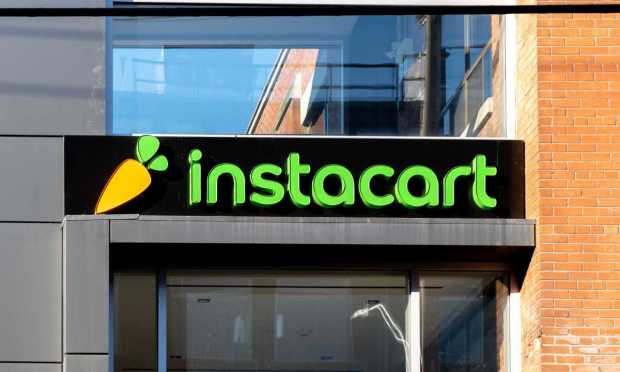
As retailers and third-party players alike compete for consumers’ online grocery spending, Instacart maintains that its scale protects it from facing too much competition from even larger grocers’ in-house fulfillment efforts.
As the grocery aggregator’s Chief Executive Officer Fidji Simo told analysts Wednesday (Nov. 8), on the company’s first earnings call since going public, Instacart can account for up to a “low teens” percentage of large partners’ total sales, and the high cost of eGrocery fulfillment can make it difficult for retailers to build in-house businesses of comparable scale.
“It took us 100 million orders before we were able to get to positive unit economics. Scale matters enormously,” Simo said. “The reason you are seeing all of our large partners partnering with us year after year … is because we are the most efficient, and we … [allow] them to keep the service as affordable as possible for their customers, which does drive growth.”
Indeed, even as some grocers expand their in-house delivery fulfillment capabilities, others are pulling back.
Midwestern grocery chain Hy-Vee, which has 550 locations across eight states, is investing in new automated fulfillment centers. Conversely, grocery giant Kroger recently slowed and then paused the expansion of its automated delivery facilities, and multinational grocer Ahold Delhaize’s U.S. arm has been shifting away from direct fulfillment and closing facilities.
“As customers’ shopping preferences evolve in the U.S., one of the concrete outcomes is to orient our online fulfillment capabilities towards more efficient, less asset-intense same-day delivery models such as click and collect,” Ahold Delhaize President and CEO Frans Muller told analysts on the company’s earnings call Wednesday.
Overall, third-party orders account for a significant share of total eGrocery purchases, though not the majority. As of late last year, slightly over a third of all consumers ordered groceries online for delivery from a same-day delivery site, according to the PYMNTS Intelligence study “12 Months of the ConnectedEconomy™: 33,000 Consumers on Digital’s Role in Their Everyday Lives.” However, the study found that curbside pickup is the most common way consumers order their groceries online.
Additionally, the majority of grocery shoppers now engage at least partially online, according to the PYMNTS Intelligence report “Consumer Interest in an Everyday App,” created in collaboration with PayPal. The study, which drew from a survey of more than 2,200 U.S. consumers, found that 45% those who had bought groceries in the last month did so both via connected devices and traditional channels, and another 16% did so exclusively using connected devices.
Instacart, for its part, is now well over the 100 million order milestone. Simo noted that in the last 12 months, the company fulfilled “more than 265 million orders.”
“Instacart has done all of this for a sector that has historically underinvested in digital technology at scale because its executives never thought that consumers would want to shop for food anywhere but inside their stores,” PYMNTS’ Karen Webster observed in a feature. “And because they were too small individually to make the investments necessary for state-of-the art tech to simplify the complexity of shopping online for 20 to 30 very different items during one shopping session.”